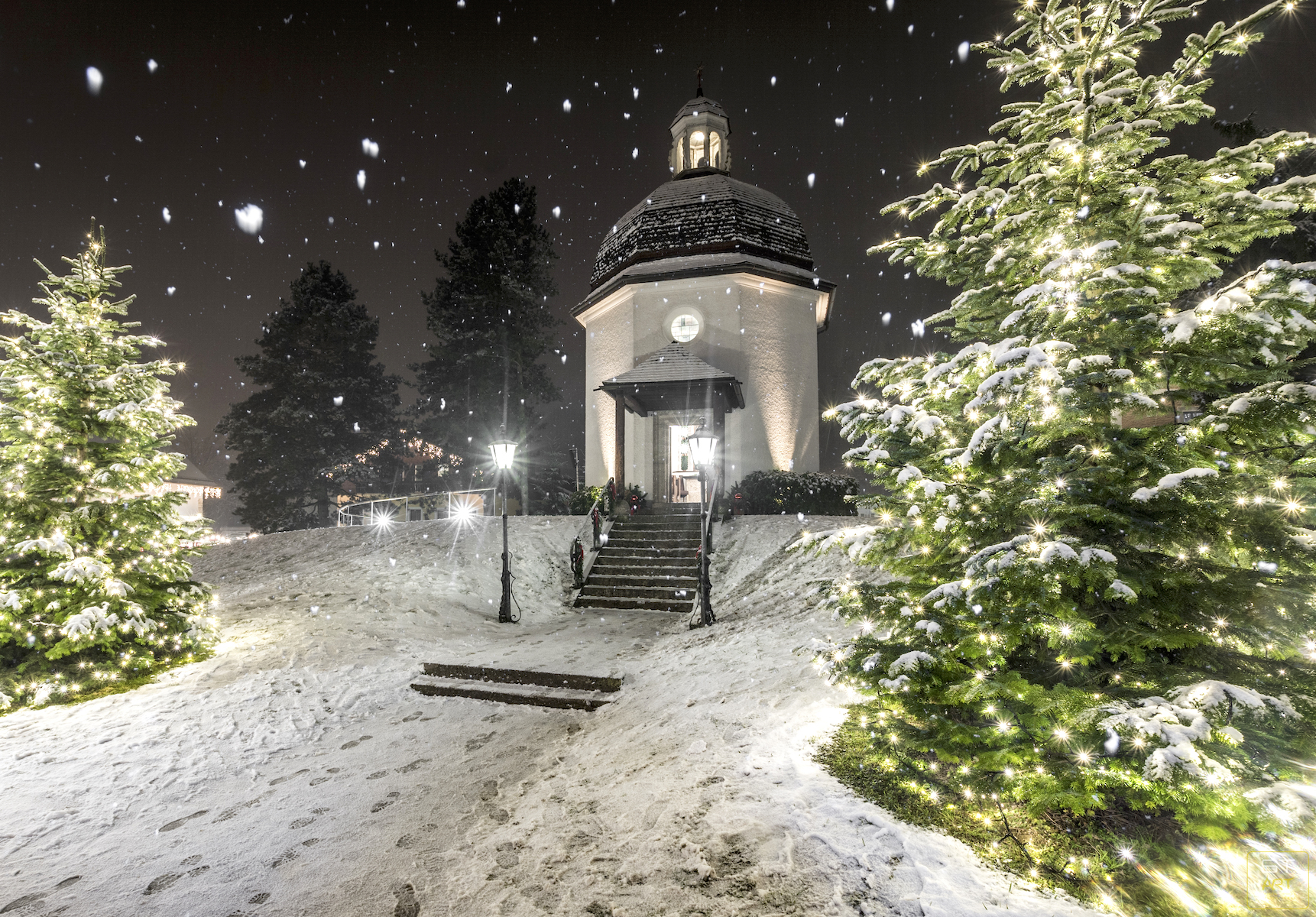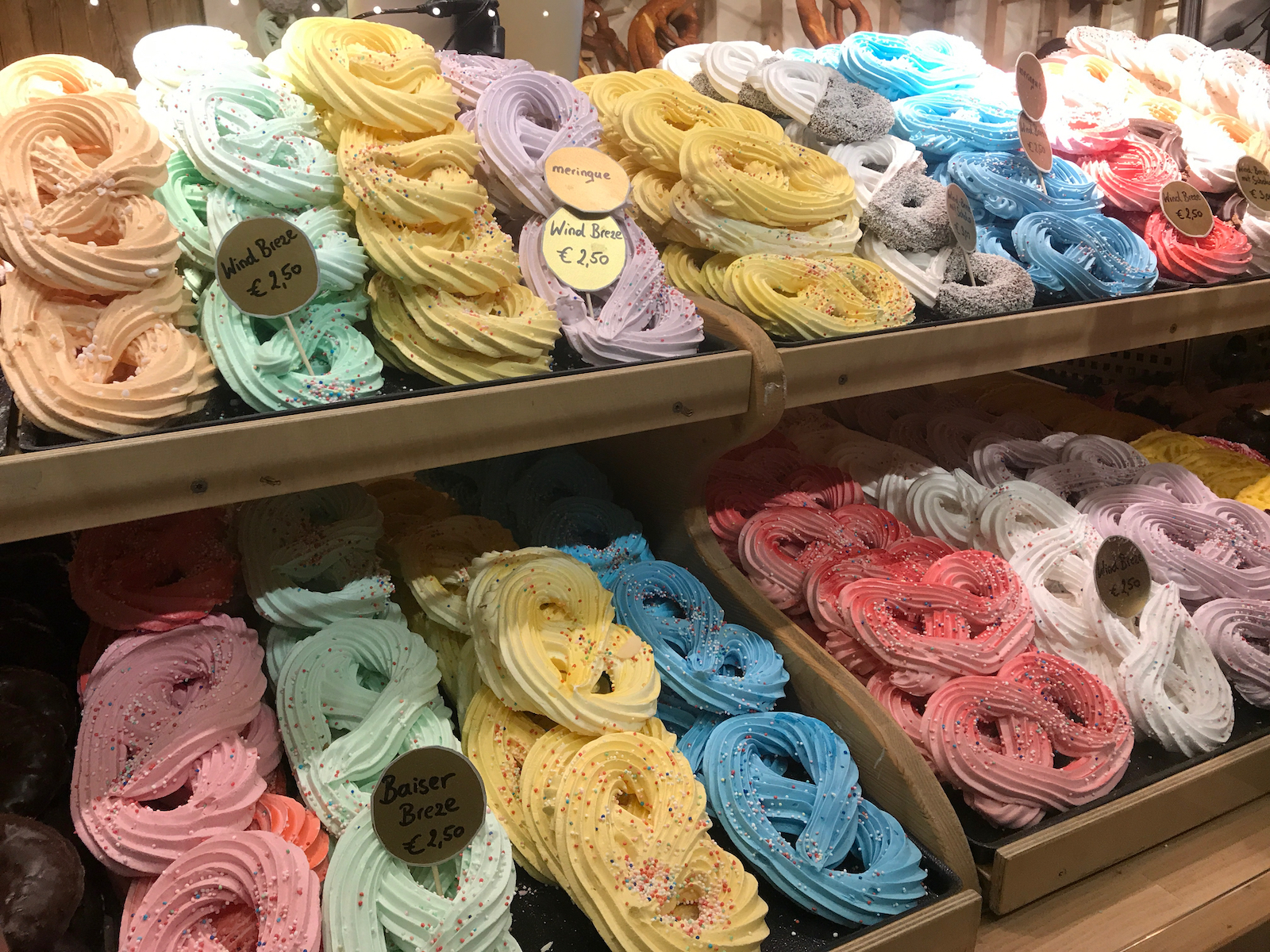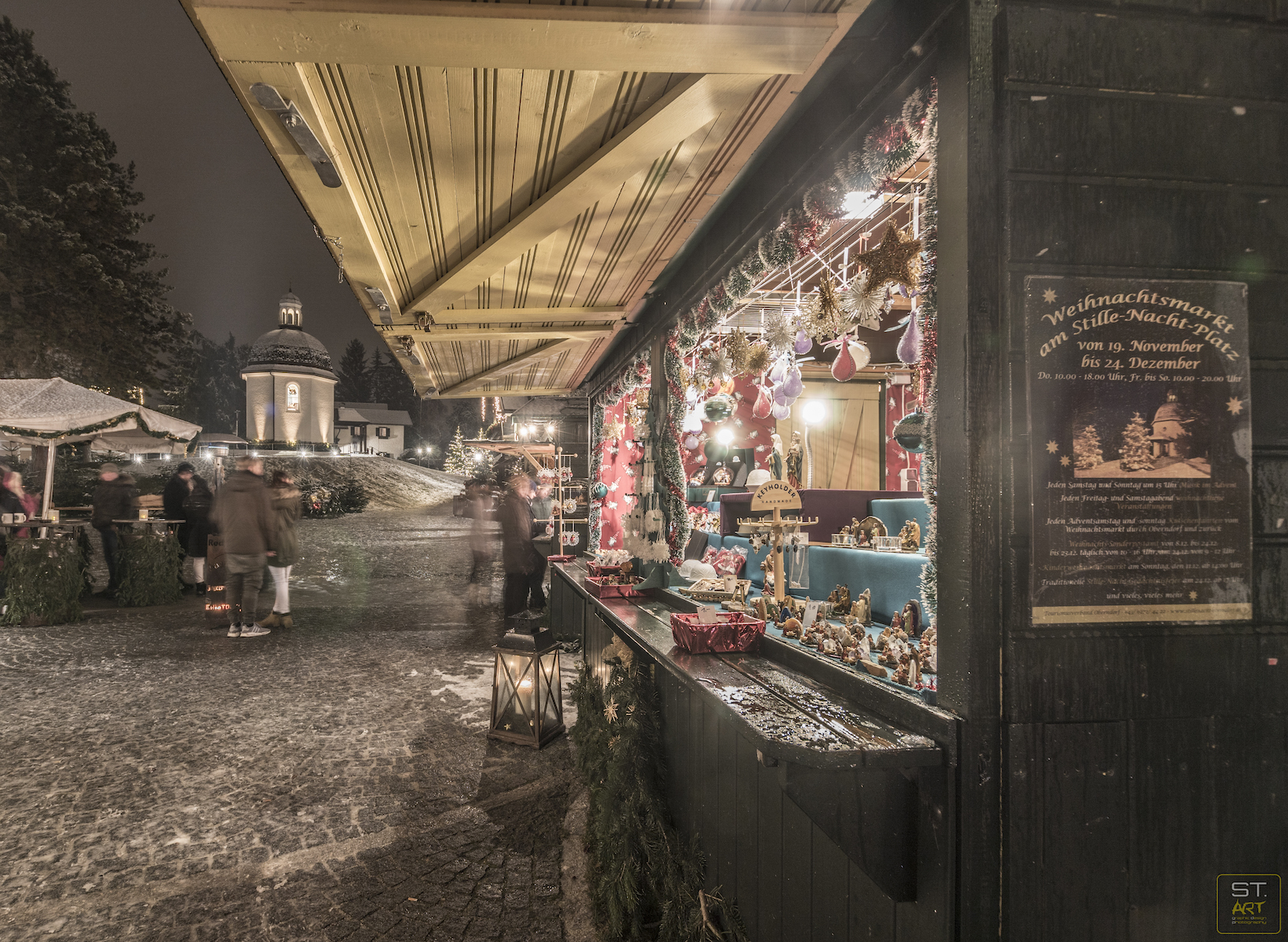
Silent nights are an uncommon occurrence in The Big Apple, but on a frosty evening in late November, a group of people are gathered at a Colonial-Era churchyard cemetery on the grounds of New York City’s Trinity Church. There’s a nip in the air, but it has zero effect on the feeling of warmth and fellowship amongst the crowd standing under the bright lights of the giant towers of the city’s Financial District.
On this night, Lower Manhattan’s nocturnal cacophony of howling sirens, honking car horns and the bustling bleat of holiday shoppers will be stilled for a moment or two. The occasion: an outdoor concert celebrating the bicentennial of one of the world’s most beloved Christmas carols, “Silent Night.”
For most people “Silent Night” is associated with crooner Bing Crosby. Crosby originally recorded the song to help raise money for the St. Colomban Foreign Missionary Society in 1935. The song was an instant hit, but when Crosby performed it again in his hit film Going My Way in 1944, the song became an instant classic engrained in the holiday season psyche of Americans, and most of the English-speaking world.
The roots of “Silent Night,” however, are not American, they’re Austrian. The song we know and love today, was initially inked as a six stanza poem by a young assistant priest from Salzburg named Joseph Mohr in 1816.
Central Europe, for those of you unfamiliar with early 19th-Century socio-political history, was still reeling from the horrors of the Napoleonic Wars, political upheaval and economic misery. Then, in 1815, an Indonesian volcano named Mt. Tambora popped its earthly cork, blanketing the skies across the globe with a deadly ashen shroud causing an eco-catastrophe that darkened the skies, dropped temperatures and destroyed crops, leaving millions hungry and destitute.
With rampant famine and poverty raging across Europe, and one of the coldest, darkest years in recorded history, the following year, 1816, would be remembered as the “Year Without a Summer.” It’s not a stretch to imagine how this terrible time may have affected a young priest, and inspired him to write a poem about peace on earth.
Not long after the final bell has tolled on Wall Street’s nearby stock exchange, and the masses of financiers, bankers and traders have gone home for the night, three smartly dressed women make there way through the Trinity churchyard gathering and turn to face the crowd in front of a stately stone monument belonging to Alexander Hamilton. The women are dressed in magnificent, brightly colored, traditional Austrian dirndl dresses. One of them, carrying a guitar, leads a group of angelic youth choristers dressed in deep red choral garb.
The three women, who are known in Austria as The Kroll Family singers, are joined by another tall Austrian soprano, and along with choir ensembles from Trinity Church they begin to serenade the audience and the departed souls memorialized on the weather-beaten tombstones in the churchyard, with heavenly renditions of “Stille Nacht” (“Silent Night”) in its original German before performing it in a host of other languages.
The relevance of the site chosen for this holiday concert is not coincidental. According to local history, the very location of the performance on this evening is the same one used by another Austrian singing troupe, The Rainer Family Singers. The Rainers, popular songsters in their native Austria, traveled all the way from the soaring peaks of the Tyrollean Alps to introduce Americans to their beloved song of peace way back in 1839, the first time “Silent Night” is believed to have been sung in North America.
The beautiful Christmas hymn The Rainer Family carried across the Atlantic was almost 20 years old when it was first heard on American shores. Not long after penning what would become the lyrics to “Stille Nacht,” Mohr moved to work as an assistant priest at a small church in Oberndorf, a small riverside town near Salzburg. While there, he asked a local teacher he had befriended to compose a melody for the poem he’d written. Franz Xaver Gruber took up the task, and on Christmas Eve, 1818, the song UNESCO has recognized as a part of the world’s Intangible Cultural Heritage, was first sung at the St. Nicholas Church in Oberndorf.

Inspired by the knowledge that this beautiful carol was created in a country I have come to know intimately over the years as a ski journalist, I decided to make a pilgrimage to its place of birth. So I added Salzburg and Oberndorf to a pre-Christmas ski trip I had been planning, and on a chilly December morning one week before the song’s 200th anniversary, I boarded a train bound for the birthplace of “Silent Night”
After of week of sunshine and hero snow in Austria’s spectacular Innsbruck, Oetztal and Arlberg regions, I pulled into Salzburg’s main train station on a crisp, sunny morning. Salzburg, if you’ve never been, is one of the most beautiful fairy tale cities on earth. Sitting in the shadow of the majestic Hohensalzburg Fortress, on the shores of the Salzach River, Salzburg and its colorful cluster of ornate Baroque buildings, towering churches and cobblestone squares is the jewel of the Alps.
Salzburg’s favorite native son is Wolfgang Amadeus Mozart, and his presence is felt throughout the city, but nowhere more than on Getreidegasse, where tourists line up to take selfies in front of the bright yellow building he was born in. Any visit to Salzburg is a feast for the senses, with the music of Mozart always in the air, and the scent of chocolate Mozartkuglen (a dark chocolate marble sized ball filled with marzipan, pistachio and nougat) never far away, but in December during the Advent period it seems like the city turns the sensual dial up to 11.
Christkindlmarkts (Christmas Markets) can be found all over the Salzburg, in fact it’s hard not to come across one during this festive time of year. The scent of Gluhweing (mulled wine), roasted chestnuts, and the sounds of Christmas songs played by street musicians, outdoor choirs and random carolers is an unforgettable feast for the senses.
Unable to resist the sights, sounds and smells of the city’s Christkindlmarkts, I thought a little journey of yuletide fancy would be a nice way to begin my pilgrimage to Oberndorf later that afternoon. I took a stroll across the romantic Makartsteg Bruck, which is known as Salzburg’s bridge of love because of the thousands of tiny locks lovers have decorated it with. It led me into the Sternbrau Advent Market, a secret, off-the-beaten-path Christkindlemarkt a local friend had once shown me. This market is tiny compared to Salzburg’s two main and much larger Christkindlmarkts (Domplatz and Residenzplatz) in the city’s old town, but the stone arches and medieval-covered walkway onto Getreidegasse have an irresistible old world charm that must be seen firsthand.
After scoring a couple of Mozart figurine tree ornaments and coiffing a delicious apple flavored Gluhweing at the Stern Advent Market, I made a beeline for the Residenzplatz market where another local friend had told me I could find a decorative cowbell from a stand with a real live blacksmith on site. Upon finding said smithy, and convincing the friendly Austrian blacksmith to let me have a few whacks on the anvil he had set up, I waltzed over to a nearby stand with the most tasty and colorful pretzel shaped meringues my eyes had ever seen, and promptly gorged myself on two of these heavenly, scrumptious egg white-based confections.
My next stop was the famed Salzburg Museum and its “Silent Night” Exhibition (open until February 2, 2019) where I was told I would find two of the earliest manuscripts related to the song. Upon entry, visitors are told the goals of the exhibition are two-fold. The first is to explain the carol’s message, humanity’s universal longing for peace, quiet and security. The other and perhaps more important message is darker, and comes as a critical examination of how the carol has been misused through advertising, politics and industry through the years.
Seeing documents related to the song in Mohr and Gruber’s hand was impressive, but paled in comparison to a 5-minute 1942 Nazi audio recording of “Silent Night” made available to visitors on earphones. The Weihnachtsringsendung (“Christmas Ring Transmission”) features the voices of soldiers from different theaters of war, on various fronts, and even in U-boats singing “Silent Night” together. The twisted use of this song of peace to bolster the bond between fighters in the field and the Fatherland is testament to the depths to which the Third Reich would sink to win the war.

With a newfound appreciation of how a song of peace could be weaponized, I was more curious than ever to see the ground zero point of the carol I’d innocently sung every Christmas since my childhood. A 35-minute train ride later, I found myself walking along a levee on the shores of the meandering Salzach River on my way to the sleepy little town of Oberndorf where “Silent Night” was first sung.
As the winter sun was setting, I saw some twinkling fairy lights at the entranceway to a small cluster of buildings. At the center of this riverside hamlet, on a high hill flanked by a tall white water tower and Mesner House, the former rectory where Mohr once lived, stood a simple, tiny white chapel with a black dome. This was it, the place where the world’s most beloved song of peace was born.
The chapel, a memorial to the now long-gone original church of St. Nicholas where Mohr and Gruber serenaded parishioners after the Christmas Eve service of 1818, was a hive of activity. Tourists were streaming in and out, with a line to get in. After a large group of tourists who were on a guided bus tour exited the chapel, I walked in for my first look at the tiny chapel. No ostentation, just a few rows of church pews, two small stained glass windows, a simple alter, a few bouquets of flowers and two small stands where pilgrims could light small candles. This is what I’d hoped to find, a place without glittering statues, giants works of art or massive rose windows. Instead, a quiet little corner of the world to think about peace on earth and good will toward men.
As I lit a small votive candle and said a prayer for members of my family I’d lost over the years, the silence of the night that had fallen outside transported me back to places and things I’d seen before. Like the images of a small Bosnian girl who just had passed in her father’s arms — haunting video I’d chosen not to use in a television news segment I’d produced years earlier — or photos of the horrors of genocide in Darfur and starvation in Yemen. And finally, to the unforgettable images of the twin towers of the World Trade Center crumbling just steps away from Trinity Church where my journey had begun.
The message of “Silent Night” is as relevant today as it was when Mohr and Gruber first sang it, and in many ways the planet hasn’t changed very much. So if you happen to sing this iconic song of peace and love over the holidays, do it with joy and hope in your heart for a better world, just like the people who first heard it in a small Austrian village exactly 200 years ago this Christmas Eve.

/
 Michael Mastarciyan is a Toronto-based print and television journalist with a passion for skiing, golf and general global wandering. When he’s not reviewing golf courses, chasing winter on the FIS Alpine Ski World Cup tour or working in television sports news production, you’ll find him reviewing skiwear for SNOW Magazine where he is Associate Fashion Editor. You can see where his latest travels take him by following @theskiwriter, @canadiandownhillers or @skigolfpostcards on Instagram.
Michael Mastarciyan is a Toronto-based print and television journalist with a passion for skiing, golf and general global wandering. When he’s not reviewing golf courses, chasing winter on the FIS Alpine Ski World Cup tour or working in television sports news production, you’ll find him reviewing skiwear for SNOW Magazine where he is Associate Fashion Editor. You can see where his latest travels take him by following @theskiwriter, @canadiandownhillers or @skigolfpostcards on Instagram.
The post In Search of the Origin of “Silent Night” appeared first on The Expeditioner Travel Site.
from The Expeditioner Travel Site http://bit.ly/2V4cB71
No comments:
Post a Comment